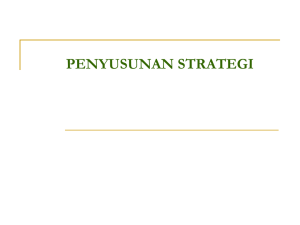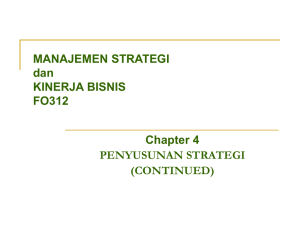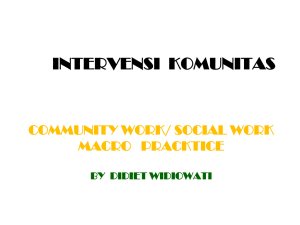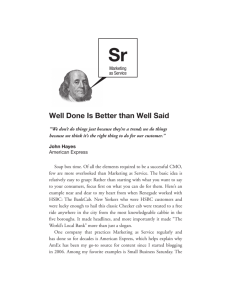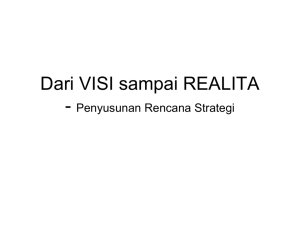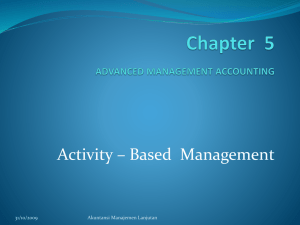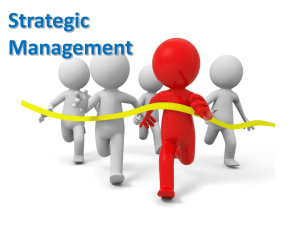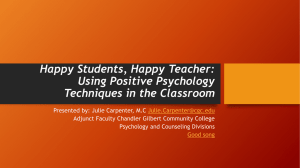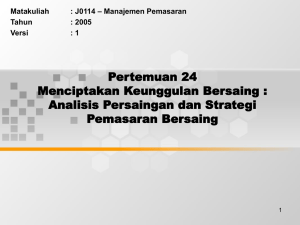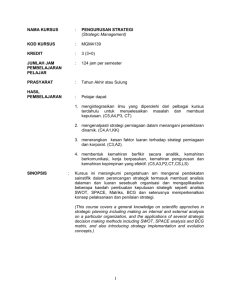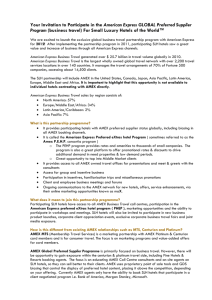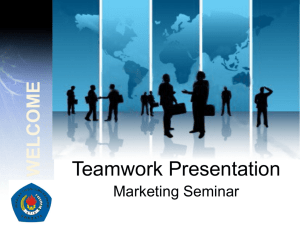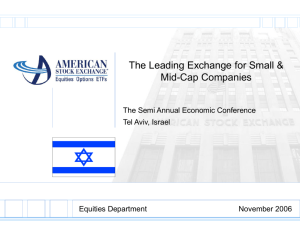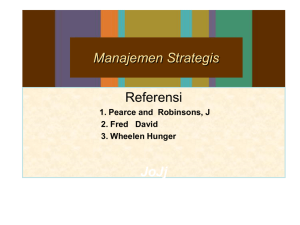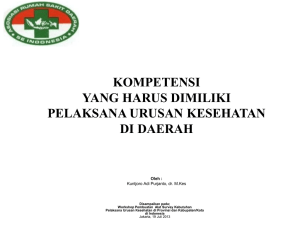WHAT IS ORGANIZATIONAL BEHAVIOR
advertisement
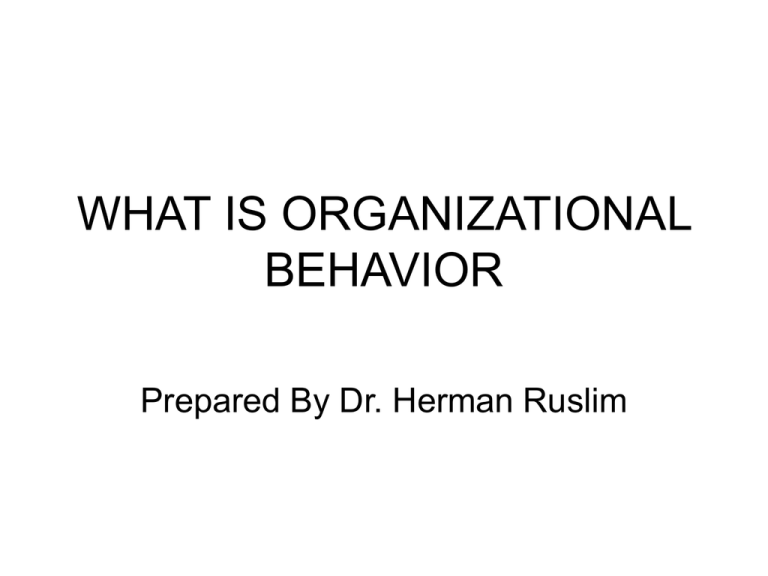
WHAT IS ORGANIZATIONAL BEHAVIOR Prepared By Dr. Herman Ruslim What Managers Do • Managers get things done through other people; • Organization, which is continuously coordinated social unit, composed of two or more people, that functions on a relatively continuous basis to achieve a common goal or set of goals. Eg. Schools, hospitals, Churches, military units, retail stores, police departments Visi Misi dan Tujuan Visi, Misi, dan Tujuan jangka panjang Strategi dan Kebijaksanaan Strategi Operasi/Investasi Sumber Daya Faktor Pendorong Strategi Permodalan SDM, Teknologi, Cabang/Unit dan Modal Pendapatan Beban Pajak Ekuitas Kinerja Keuangan Management Function • Planning: function encompasses defining an organization’s goal and developing a comprehensive set of plans to integrate and coordinate activities; • Organizing: It includes determining what tasks are to be done; who is to do them, how the tasks are to be grouped, who reports to whom, and where decisions are to be made; • Leading: when managers motivate employee, direct the activities of others, select the most effective communication channels, or resolve conflict among members, they are engaging in leading • Controlling: To ensure that things are going as they should, management must monitor the organization’s performances Management Roles Lanjutan Management Roles Management Skills Lanjutan Lanjutan Enter Organizational Behaviour • Organizational Behaviour: A field of study that investigates the impact that individuals, groups, and structure have on behavior within organization, for the purpose of applying such knowledge toward improving an organization’s effectiveness Organizational Behavior Discipline Behavioral Science Pschology Social Psychology Contribution Learning Motivation Personality Emotions Perception Training Leadership Effectiveness Job Satisfaction Individual Decision Making Performance Appraisal Employees Selection Work Design Work Stress Unit of Analysis Output Individual Behavioral Change Attitude Change Communication Group Processes Group Decision Making Communication Power Conflict Intergroup Behavior Group Sociology Formal Oragnization Theory Organizational Technology Organizational Change Organizational Culture Comparative Values Comparative Attitudes Cross Cultural Analysis Anthropology Organizational Cultures Organizational Environment Power Organization System Study of Organizational Behavior Lanjutan • Pschology: The science that seeks to measure, explain, and sometimes change the behavior of humans and other animals • Sociology: The study of people in relation to their social environment or culture; • Social Psychology: An area within psychology that blends concepts from psychology and socialogy and that focuses on the influence of people on one another; • Intuition: A gut feeling not necessary supported by research; • Systematic Study: Looking at relationships, attempting to attribute causes and effects and drawing conclusions based on sciencetific evidence Challenges and Opportunities for OB • Responding to Globalization - Increased Foreign Assignments - Working with People from Different Cultures - Coping with Anticapitalism Backlash - Overseeing Movement of Jobs to Countries with Low Cost Labor - Managing People During the War on Teror Managing Workforce Diversity • Workforce Diversity: The concept that organizations are becoming more heterogeneous in terms of gender, age, race, ethnicity, sexual orientation, and inclusion of other diverse groups. Major Workforce Diversity Categories - Gender; Race: National Origin Age; Diability; Domestic Partners Non-Christian Improving Quality and Productivity • Improving Qualtiy: - TQC; - Kaizen: Plan Do Check Action; Increasing Productivity: - Reduce cost; - Simplication of design, manufacturing, layout, processes, and procedure. To achieve the ends the managers understand that the success of any efforts at improving quality and productivity must include their employees. These employees will participate in planning these changes. OB offers important insight into helping managers work through these changes. Responding to The Coming Labor Shortage • Economic ups and downs are difficult to predict. The world economy in the late 1990s, for instance, was generally quite robust and labor markets were tight. Most employees found it difficult to find skilled workers to fill vacancies. Then, beginning in 2001, most developed countries entered an economic downturn. Layoff were widespread and supply of skilled workers became much more plentiful. In contrast, demographic trends are much more predictable and we are facing one direct implications for OB: Barring some unforeseeable economic or political calamity, there will be a labor shortage for at least another 10 to 15 years. Improving Customer Service • AMEX recently turned Joan Weinbel’s worst nightmare into a non-event. It was 10:00 PM Joan was home in New Jersey, packing for a week long trip, when she suddendly realized she had left her Amex Gold card at a restaurant in New York City earlier in the evening. The restaurant was 30 miles away. Then she called Amex, then Amex very helpful telling her not to worry, and the problem is solved, Amex give her a new credit card and protect the old card. This is how improving customer services.
